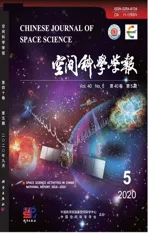Progress and Prospects of the Strategic Priority Program on Space Science*
2020-04-16WANGChiSUNLilinFANQuanlinLIChaoBAIQingjiang
WANG Chi SUN Lilin FAN Quanlin LI Chao BAI Qingjiang
Progress and Prospects of the Strategic Priority Program on Space Science*
WANG Chi SUN Lilin FAN Quanlin LI Chao BAI Qingjiang
(100190)
In May 2018, the second phase of the Strategic Priority Program on Space Science (SPP II) was officially approved by the Chinese Academy of Sciences, in view of the significant scientific achievements of the first phase of the Strategic Priority Program on Space Science (SPP I) which includes 4 space science missions: the Dark Matter Particle Explorer (DAMPE), ShiJian-10 (SJ-10), Quantum Experiments at Space Scale (QUESS) and Hard X-ray Modulation Telescope (HXMT). Aiming to address fundamental scientific questions, SPP II focuses on two major themes: How the universe and life originate and evolve and What is the relationship between the solar system and human beings. In areas that Chinese scientists have advantages, new space science missions including Graviational wave high-energy Electromagnetic Counterpart All-sky Monitor (GECAM), the Advanced space-based Solar Observatory (ASO-S), the Einstein Probe (EP), and Solar wind Magnetosphere Ionosphere Link Explorer (SMILE) have been approved in the framework of SPP II. This paper presents the research highlights of the SPP I, introduces the recent progress of SPP II, and puts forward the prospects for future development.
Space science, Strategic Priority Program, Space science missions
In January 2011, the first phase of the Strategic Priority Program on Space Science(hereafter referred to as SPP I) officially kicked off as the first batch of the Strategic Priority Program initiated by the Chinese Academy of Sciences (CAS), which marks the beginning of systematic funding support to space science in China. During the 12th Five- Year Plan period, under the framework of SPP I, four space science missions have been developed and launched, including the Dark Matter Particle Explorer (DAMPE, or Wukong), Shijian-10 (SJ-10), Quantum Experiments at Space Scale (QUESS, or Micius) and Hard X-ray Modulation Telescope (HXMT, or Insight), while an intensive study of the future space science missions and advanced research of space science missions and payloads have been conducted. The implementation of SPP I has enabled the following researches,. the properties of black holes and the laws of physics under extreme conditions, the test on completeness of quantum mechanics, dark matter, the laws of the movement of matter and the laws of life activities in space environment, and by far, a number of high impact scientific findings have been achieved.
On 31 May 2018, CAS officially kicked off the second phase of the Strategic Priority Program on Space Science (SPP II). Revolving around two major science themes: how the universe and life originate and evolve and what is the relationship between the solar system and human beings, SPP II will implement a batch of new space science missions, including the Gravitational wave high-energy Electromagnetic Counterpart All-sky Monitor (GECAM), the Advanced space-based Solar Observatory (ASO-S), the Einstein Probe (EP), and Solar wind Magnetosphere Ionosphere Link Explorer (SMILE). Meanwhile, new intensive study of the future space science missions, advanced research of space science missions and payloads, and projects for general support are conducted. SPP II is expected to make original breakthroughs in the following areas,. gravitational wave electromagnetic counterpart, the relationship between the solar magnetic field and solar flares/ Coronal Mass Ejection (CME), the time-domain astronomy, the interaction between the solar wind with the magnetosphere,, which will deepen our understanding of the laws of the universe and nature.
1 Major Achievements of SPP I
By the end of December 2019, the DAMPE mission has finished the all-sky mapping for 8 times and detected 7.3 billion high-energy particles. The observation data in the last three years have provided precise measurements of the cosmic ray proton spectrums from 40 GeV to 100 TeV (see Figure 1). The results were published inin September 2019[1].
The Shijian-10 mission has made several new scientific and technological achievements with high impact. A total of 252 papers (including 181 SCI papers) have been published. In addition, Springer and China Science Press have jointly published two monographs on microgravity and life science in space based on Shijian-10 data respectively.
The QUESS mission has successfully realized its three scientific objectives: the satellite-ground and ground-satellite quantum entanglement distribution, satellite-ground quantum key distribution, and satellite-ground quantum teleportation over the scale of 1000 km. In collaboration with the California Institute of Technology in the US, the University of Queensland in Australia., the QUESS team has also conducted experimental testing on a theoretical model that predicted the quantum decoherence induced by gravitational fields (see Figure 2). The result was published online as First Release inon 19 September 2019[2].

Fig. 1 Comparison of proton spectrum by DAMPE and those by other experiments
The HXMT mission has made important scientific contributions regarding the X-ray observations in the first gravitational wave event caused by binary neutron star merging. The X-ray pulsar navigation experiment has been successfully carried out, with the positioning accuracy within 10 km (3s), which further demonstrates the feasibility of spacecraft autonomous navigation using pulsars, and paves the way for its future practical application in deep space (see Figure 3). The findings were published in the(supplement) on 21 August 2019[3].
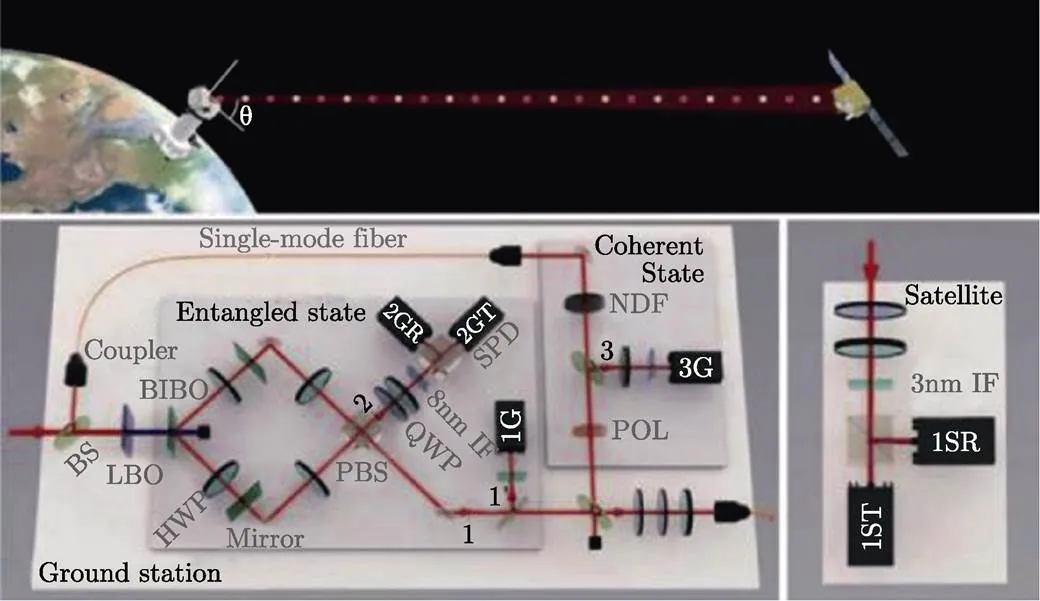
Fig. 2 Experimental test of gravitationally induced quantum decoherence

Fig. 3 HXMT pulsar navigation
2 Recent Progress of SPP II
2.1 Space Science Missions
2.1.1 Gravitational Wave High-energy Electromagnetic Counterpart All-sky Monitor (GECAM)
Making full use of the two-satellite constellation, GECAM (see Figure 4) has the comprehensive advan- tages of all-time and all-sky field of view, high sensitivity and high positioning capability,. The mission aims to detect as many gravitational wave gamma-ray bursts and new electromagnetic counterparts as possible to unveil the mystery of the violent merger of dense celestial bodies in the universe, and it is expected to obtain important original results. It will also detect high-energy radiation from fast radio bursts, special gamma-ray bursts, magnetar bursts, and high-energy radiation phenomena in space, such as solar flares and earth gamma-ray flashes, to further understand their burst mechanisms.
The GECAM mission was approved in December 2018 and entered into the Flight Model phase in November 2019. It is expected to be launched into space in November 2020. The launcher will carry the two satellites of GECAM mission whose total mass is not exceeding 360 kg, and it will operate in a Sun- synchronous orbit 600 km from the Earth with an inclination of 29°. The designed lifetime of the mission is 3 years.
2.1.2 Advanced Space-based Solar Observatory (ASO-S)
ASO-S (see Figure 5) aims to study the relationship between solar magnetic field, solar flare, and Coronal Mass Ejection (CME), observe the responses of different layers of solar atmosphere to solar eruption, and study the transmission mechanism and dynamic characteristics of solar eruption energy.

Fig. 4 Artist’s view of GECAM
The ASO-S mission was approved in December 2017. It entered into the Engineering Model phase in June 2019. It is planned to be launched before the end of 2021. The total mass of the ASO-S spacecraft is about 1000 kg, and it operates in a Sun-synchronous orbit 720 km from the Earth with an inclination of 98.2°. The expected lifetime of the spacecraft is 4 years.
2.1.3 Einstein Probe (EP)
The EP mission (see Figure 6) is a scientific probe in the field of time-domain astronomy and high-energy astrophysics. It will carry out a wide field-of-view time-domain survey in the soft X-ray band (below 4.0 keV), aiming to systematically detect high-energy transients andvariable cosmic X-ray sources, and explore their natures and physical processes.
The EP mission was approved in December 2017 and passed the mission Preliminary Design Review (PDR) in December 2019. It is scheduled to be laun-ched before the end of 2022. The total mass of the EP spacecraft is about 1400 kg and it operates in a near-earth orbit of 500 km with an inclination of 29°. The expected lifetime of the mission is 3 years.
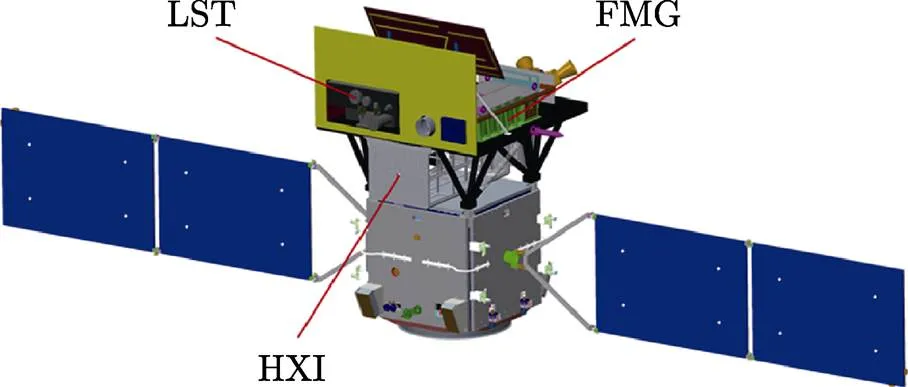
Fig. 5 Configuration diagram of ASO-S satellite

Fig. 6 Artist’s view of EP satellite in orbit
2.1.4 Solar Wind Magnetosphere Ionosphere Link Explorer (SMILE)
The SMILE mission (see Figure 7) is a novel self- standing mission dedicated to observing the solar wind- magnetosphere couplingsimultaneous X-ray imaging of the magnetosheath and polar cusps, UV imaging of global auroral distributions and in situ solar wind/magnetosheath plasma and magnetic field measurements.
Jointly initiated by CAS and the European Space Agency (ESA), the mission is jointly proposed by the Chinese and European scientists, and has comprehensive and in-depth cooperation between China and ESA after the Geospace Double Star Exploration Program (DSP), making the mission a new model for international cooperation in space science[4, 5].
The SMILE mission was approved by CAS in November 2016 and by ESA in March 2019 respectively. In January 2020, it passed joint Mission Preliminary Design Review (M-PDR) and is scheduled to be launched from the Kourou launch site in 2023– 2024. The total mass of SMILE spacecraft (including the propulsion module) is about 2000 kg, with the operation perigee >5000 km, the apogee around 20e, and the inclination of 70°~98°. The spacecraft follows the large elliptical orbit and the lifetime of SMILE satellite is expected to be 3 years.
2.2 Intensive Study of the Future Space Science Missions
The intensive study of the future space science missions is dedicated to selecting from the submitted space science mission proposals, which have finished the mission concept study, a few missions with high impact, strong innovation and with Technology Readiness Level (TRL) enabling the launch in the next Five Years Plan period. For the missions selected for intensive study, the following work will be conducted accordingly, including an in-depth study of the mission’s scientific objectives, optimization of detection methods, key technologies development, and test. For the time being, the following five missions have been selected for intensive study.

Fig. 7 Artist’s view of SMILE in operation
2.2.1 Enhanced X-ray Timing and Polarimetry Mission (eXTP)
Through the exploration of one singularity (black hole), two stars (neutron star and quark star), and three extremes (extreme conditions of gravity, magnetism, and density) in the waveband of 0.5~30 keV, the mission (see Figure 8), with unprecedented capabilities, aims to reveal the laws under extreme conditions. The mission entered into the definition phase in November 2019.
2.2.2 Taiji Program: Chinese Space-based Gravitational Wave Detection Missions
Aiming for the orbiting and merging system of intermediate-mass binary black holes whose total mass is within the range of a few hundred to a hundred thousand solar mass, the mission strives to detect the gravitational waves for the first time in space and to further understand the universe. The program adopts the space laser interferometry in the middle and low frequency band (0.1 mHz~1.0 Hz). A three-step development strategy has been established for the program: single satellite mission, double satellites mission, and triple satellites mission. As the first step of the Taiji program, Taiji-1, also known as the Microgravity Technology Experimental Satellite, was successfully launched into orbit on 31 August 2019 (see Figure 9). By December 2019, Taiji-1 has successfully completed in-orbit tests, marking the first step of Chinese gravitational wave detection in space.
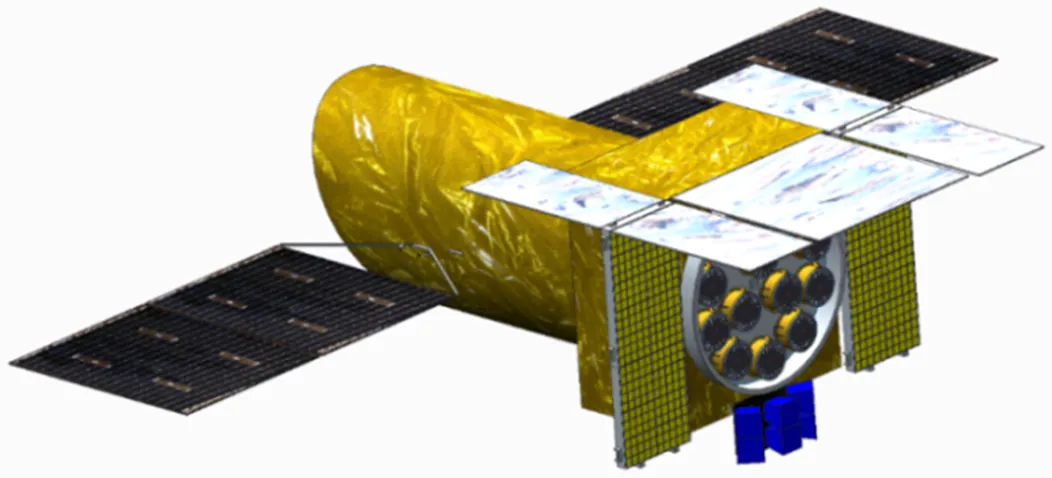
Fig. 8 eXTP space observatory
2.2.3 MEO-to-GEO Quantum Satellite
On the basis of the successful low earth orbit experiments by the QUESS mission, the key technology development for MEO-to-GEO quantum satellite (see Figure 10) is in full swing and the ground verification test of all-day quantum key distribution over a long distance is conducted to explore the application of space quantum communication technology in the global all-day quantum communication network. At present, the key technology development and the satellite prototype development are underway.
2.2.4 Ultra-long Wavelength Astronomical Observation Array
The interferometry array (see Figure 11) is composed of satellites formation flying around the moon to make observations of the sky at frequencies less than 30 MHz which are difficult to observe on Earth, opening a new window to electromagnetic spectrum to explore the dark ages and the cosmic dawn. At present, the intensive study of the mission scientific objectives and the payload prototypes development are underway.

Fig. 9 Taiji-1 successfully launched on 31 August 2019

Fig. 10 MEO-to-GEO quantum satellite
2.2.5 Small Bodies Sample Return Mission
The mission (see Figure 12) will explore the most primordial asteroids and comets, collect samples and return them to Earth for laboratory investigation. The mission aims at revealing the formation of the solar system, surveying the space resources, and providing science knowledge for defending the Earth against the impact of small objects. The candidate asteroid of the mission is the one which was formed closest to the Sun and is associated with the birth of the Earth. At present, the intensive study of the mission scientific objectives and the key technology development are underway.
2.3 Pre-study of Space Science Missions and Payloads
The pre-study of space science missions and payloads aims for the planning of future space science missions and the pre-study of the necessary key technologies by establishing a cluster of projects, covering the strategic study of space science development, mission concept research, cutting-edge technologies, key technology development, and ground test and demonstrations, which will lay a solid foundation for the sustainable development of space science.
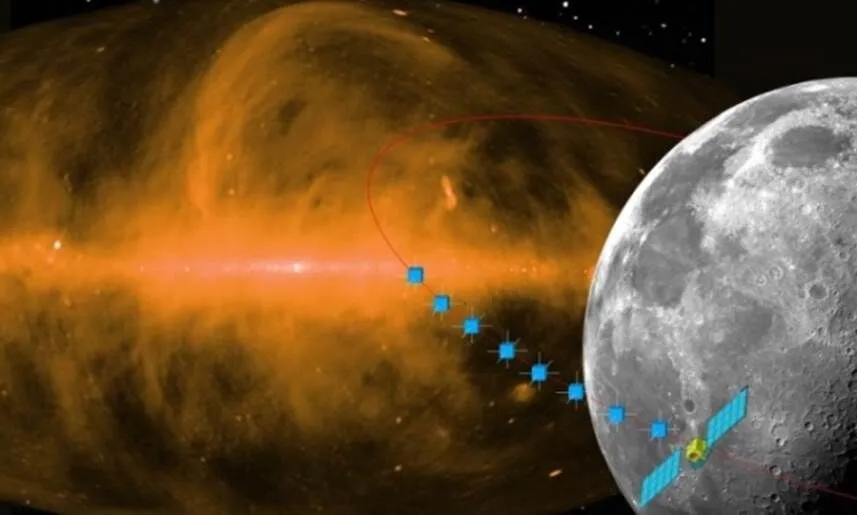
Fig. 11 Ultra-long wavelength astronomical observation array

Fig. 12 Small bodies sample return mission
2.3.1 Space Science Mission Concept Study
Focusing on the mission concepts with major innovative ideas, Space Science Mission Concept Study is dedicated to providing initial impetus and lay a solid foundation for the optimization of scientific objectives for future space science missions and future implementation. At present, 80 mission concepts have been selected to proceed with half-year study, and 11 mission concepts have entered the phase 0 of space science missions and payloads.
2.3.2 Pre-study of Space Science Missions and Payloads
The pre-study of Space Science Missions and Payloads is targeted for developing key technologies for future space science missions by planning a cluster of research subjects, including innovative concepts of space science missions, key technologies of payloads, ground calibrations as well as short-time flight demonstrations. Until now, two batches of research projects, 82 in total, have been selected.
2.3.3 Space Science Mission Planning and Data Analysis Study
Supports are given to approve missions to conduct mission in-orbit planning, calibration analysis, systematic simulation, algorithm optimization and team building, which will pave the way for the scientific data analysis after launch, and provide a guarantee for the realization of scientific objectives of space science missions and the achievement of major scientific breakthroughs. 9 projects have been approved by far.
3 International Cooperation in SPP II
In-depth and extensive international cooperation has been conducted in the missions under SPP II.
The SMILE mission is jointly initiated and implemented by CAS and ESA, and both sides are committed to the joint mission plan, the joint call for proposals, the joint selection, as well as joint mission design, implementation, and data analysis and application within the mission life cycle. Following the principle of no funding exchange, the SMILE mission is another example of the in-depth cooperation between China and ESA after DSP.
For the EP mission, China and ESA are jointly carrying out the payload development and calibration. Follow-up X-ray Telescope (FXT), as one of the two payloads on board, is jointly developed by CAS, ESA, and the Max Planck Institute for Extraterrestrial physics (MPE).
For ASO-S mission, CAS will jointly calibrate the Lyman-alpha Solar Telescope (LST) with the Turin Observatory in Italy.
The eXTP mission is an ultra-large X-ray observatory led by China with participation from a couple of European countries. International cooperation has been carried out in the following areas,. study of scientific objective, payloads development and calibration.
4 Management of SPP II
National Space Science Center is entrusted for the management of SPP and is responsible for the implementation of the space science missions. Under the leadership of CAS, a complete chain has been established covering strategic planning, mission concept research, advanced research of space science missions and payloads, intensive study of the future space science missions, implementation of space science missions, launching and in-orbit operation, science output and evaluation. The “Principal Investigator + Mission Commander + Chief Engineer” mechanism has been set up for the mission management. The Mission Commander and the Chief Engineer are responsible for the implementation of space science missions, while the Principal Investigator is responsible for the realization of the mission scientific objectives. SPP has attracted the major space science communities and related institutions in China to participate in the research and mission implementation. In the meantime, scientists from UK, Germany, France, Italy, Switzerland, Canada., to some degree, have taken part in the mission implementation under SPP, as well as the intensive study of the future space science missions.
5 Prospects by 2035
A new chapter of Chinese space science endeavor has been opened with the implementation of SPP. China puts a high value on space science and will continuously push forward the space science endeavor.
Since the study of Space Science Mid- and Long- term Plan by 2035 led by Ministry of Science and Technology of the People’s Republic of China from April 2019, the Chinese Space Science community has proposed a new National Science and Technology Major Program (see Figure 13), of which missions fall into 4 categories, with 3 science themes to be studied. It should be considered as a reasonable extension and enlargement of SPP.
The program addresses 3 science themes,. the origin and evolution of the universe, the origin and evolution of the solar system, and the solar activity and its impact on humans. To be specific, for the theme concerning the origin and evolution of the universe, it focuses on space-based detection of the medium and low-frequency gravitational wave and the electromagnetic counterpart, the physical pro- perty and rule of black hole in extreme conditions, the superfine structure of compact objects, and the nature of dark matter and dark energy. For the theme concerning the origin and evolution of solar system, it focuses on the property, origin, and evolution of planets like the Moon and the Mars, asteroids and comets, the habitability of Planet Earth, the origin and evolution of life, and the search of terrestrial exoplanets. For the theme concerning the solar activity and its impact on human, it aims to unveil the fundamental rule of solar activity, understand the propagation and evolution of solar activities in interplanetary space, study the impact of solar activities on the geospace environment and human’s high-tech systems, unveil the kinetic properties of matter and the rule of life activity in the space environment, and study and predict the interaction evolution of Earth multi-layer system.

Fig. 13 Roadmap of Chinese space science
In the program, the missions fall into 4 categories, including Extreme Universe, Space-Time Ripples, Sun-Earth Panorama, and Habitable Planets. Open for international cooperation, the program plans 12 launches, for 7 flagship science missions,. eXTP, Gravitational wave constellation, Heliospheric boundary exploration, and Search for Earth 2.0.
Among them, eXTP is expected to get ready for launch by 2025, to unveil the physical rule under extreme conditions, and answer the core science questions about black hole and neutron star; by 2030, missions including gravitational wave pathfinder, Stereoscopic imaging of the Sun, Earth’s multi-layer coupling detection, and Search for Earth 2.0, will be implemented to achieve great breakthroughs in space- based gravitational wave detection, heliophysics, earth science, and terrestrial exoplanets search. By 2035, high-resolution gamma-ray dark matter mission, gravitational wave constellation, heliospheric boundary detection, search for atmospheric composition and the habitable planet will be implemented, to achieve promising results in dark matter detection, space-based gravitational wave detection, heliophysics, and terrestrial exoplanets search.
To support the mission implementation, a new National Key Research and Development Project is also proposed to carry out the development of the key technologies. Up to now, around 30 technologies have been included in the program, covering solar system exploration technologies like mission system design, launcher, propulsion, measurement and control; cutting-edge payload technologies and platforms; and common technologies like intelligent landing, in-situ analysis on the surface of planets and sample return.
The Chinese space science community is eager to see the above-mentioned projects to be adopted by the government, to realize the scientists’ dream and push forward China’s space science endeavor.
6 Conclusion Remarks
The implementation of SPP II has progressed smoothly after getting approved. At the same time, technology preparations and pre-study are underway to pave the way for future space science development in the next five years and the distant future.
In order to continuously produce high impact scientific achievements, SPP will keep abreast to the scientific frontiers, continue to strengthen the science-driven principal, stick to the high impact scientific objectives and strengthening of space science disciplines as the most important criteria for mission selection, adhere to the “Principle Investigator + Mission Commander + Chief Engineer” mechanism in the implementation of space science missions, and continue the open policy to support multi-level international cooperations.
Great undertakings begin with dreams, based on innovation, and succeed in solid work[6].Chinese space scientists will forge ahead to deepen humans’ understanding of the universe and the laws of nature, contributing more to the advance of human civilization.
[1] An Q, Asfandiyarov R, Azzarello P,. Measurement of the cosmic ray proton spectrum from 40 GeV to 100 TeV with the DAMPE satellite [J].2019, 5(9):eaax3793
[2] Xu Ping, Ma Yiqiu, Ren Jigang,. Satellite testing of a gravitationally induced quantum decoherence model [J]., 2019, 366(6461):132-135
[3] Zheng S J, Zhang S N, Lu F J,. In-orbit demonstration of X-ray pulsar navigation with the Insight-HXMT satellite [J].., 2019, 244(Supp.):1
[4] ESA. ESA Gives Go-ahead for SMILE Mission with China [EB/OL] (2019-03-05) [2019-7-19]. https://phys.org/news/ 2019-03-esa-go-ahead-mission-china.html
[5] Wang Chi, BRANDUARDI-RAYMOND Graziella. Progress of Solar Wind Magnetosphere Ionosphere Link Explorer (SMILE) Mission [J].., 2018, 38(5):657-661
[6] Speech by President XI Jinping upon meeting representatives of space scientists and engineers who participated in the research and development of the Chang'E-4 mission [EB/OL].[2019-12-01]. http://china.cnr.cn/news/20190221/t20190221_ 524517116.shtml?from=groupmessage&isappinstalled=0
P 35
WANG Chi, SUN Lilin, FAN Quanlin, LI Chao, BAI Qingjiang. Progress and Prospects of the Strategic Priority Program on Space Science., 2020, 40(5): 618-625. DOI:10.11728/cjss2020.05.618
* Supported by the Strategic Priority Program on Space Science of the Chinese Academy of Sciences (XDA15000000)
May 23, 2020
E-mail: cw@nssc.ac.cn
杂志排行
空间科学学报的其它文章
- Progress Report on Insight-HXMT: China’s First X-ray Astronomy Satellite
- Update on the ESA-CAS Joint Solar Wind Magnetosphere Ionosphere Link Explorer (SMILE) Mission*
- Current Status and Main Scientific Results of In-flight CSES Mission*
- SJ-10 Recoverable Satellite for Space Microgravity Experiments*
- Space Solar Physics in China*
- Taiji-1 Satellite Mission*
